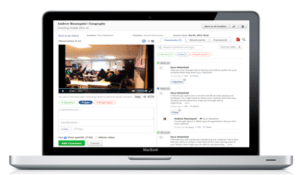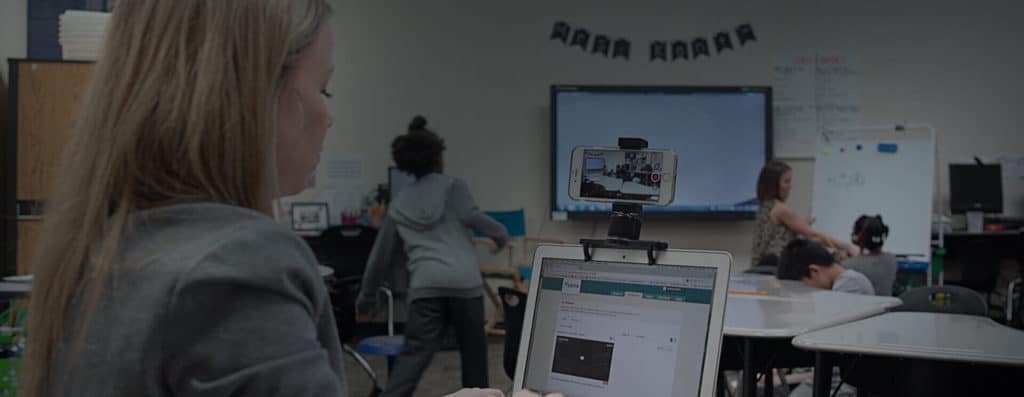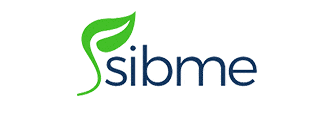
Instructional Coaching at Scale (How a school district uses video to make it possible to coach all teachers)
San Marcos Consolidated Independent School District covers 210 square miles in central Texas, “in the heart of the Texas Hill Country between San Antonio and Austin, the state capitol.” Like much of Texas, the district is growing rapidly. The district’s Department of Teaching, Learning and Assessments is committed to serving the students in this dynamic district “through curriculum leadership that facilitates the transformation of curriculum and instructional delivery systems.” They face a common problem though: how to achieve that goal with all teachers with limited resources.
We recently spoke with members of the Teaching, Learning, and Assessment Department about their Sibme Experience. We asked them how they’re using Sibme to help them accomplish their vision at scale.
What motivated you to consider the possibility of using video to coach and develop teachers? Were there any specific outcomes that you’re trying to impact with the use of Sibme? Any problems you wanted to solve?
Video coaching allows instructional coaches to reach more teachers with personalized feedback. The dialogue that occurs electronically can happen at any time, instead of only when the teacher and coach can find common opportunities to meet.
From working with teachers last year as an instructional coach, it was sometimes difficult to explain in words areas of instruction that needed improvement or strengths to highlight. The videoing of classes makes the coaching conversation so much more powerful and efficient for the simple fact that teachers can actually see what is occurring in their classroom. For example, one of the areas that I am focusing on in the department is increasing small group purposeful talk throughout the 50-minute lesson. As teachers watch their videos, I either add comments or we talk about opportunities for SGPT during the lesson; without the video, this conversation and growth could not occur so easily.
I was motivated by the opportunity to provide more specific and meaningful feedback to teachers. I wanted to impact the way material was being delivered by teachers within the classroom. The use of Sibme is helping me turn a teacher-centered classroom into a more student-centered classroom.
As Sibme was the tool being used at the middle schools, in order for me to streamline my coaching I asked that it be the coaching tool I use with my high school teachers as well.The specific outcome that I am trying to impact are a more objective, teacher guided coaching, the video along with other coaching tools allow for a coaching conversation removed from feelings that usually surround feedback.
As a math teacher, I used video to self-reflect on my own practices and found it to be extremely beneficial. My goal is to use Sibme as an effective coaching tool to set teaching goals, and build consistent and effective instructional strategies that increase student performance and engagement.
Is there a sub-set of teachers that you think benefits more from this sort of support? How do different teachers (new teachers, struggling teachers, master teachers, etc.) respond to video and how do you respond to them?
I believe all teachers can benefit from using video coaching. Since I have trusting relationships with my teachers, asking them to allow videotaping was fairly easy. However, it was difficult in the beginning for teachers to respond positively to their video, as they had a tendency to to just focus on my comments or the negatives they saw in the lesson. Now I allow teachers to watch the video first, without comments, rank themselves and their students, and follow-up with a specific set of questions (credit to Jim Knight) that allows for a more positive and productive conversation. These questions also steer teachers to effective goal setting to improve instruction. The only difference I see for teachers is the goal they want to achieve, not their teaching experience.
It’s been our goal this year to coach every teacher in the core subjects. We aren’t looking for deficits. From the newest teacher to the master teacher, we all have room to grow professionally.
New teachers and master teacher respond well to the video coaching, they like to opportunity to grow and appreciate having a partner in the process.. Struggling teachers, struggle with multiple components of the growth process and the video coaching is least effective with this group as this group is resistant to coaching overall.
Most teachers have been open to Sibme, but some feel self conscious about being on video. If a teacher is hesitant, I will try to video the students or other aspects of the classroom instead of the teacher.
[When a teacher is resistant], I asked the teacher to tell me which specific class to video and gave the video a short window of about 15 minutes. Teachers were more open to that set-up and it allowed for us to start the conversation in a manner that was positive and in their comfort zone.
What advice would you have for schools and districts looking to get started? What best practices have you found and lessons have you learned?
- Present: “Professional development at the beginning of the year, provided to the entire staff, about the power of video coaching. Teachers, principals, and instructional coaches need to all be on the same page regarding the impact that video coaching can make on instruction, as well as expectations for the videoing of lessons.”
- Safety: “Let teachers video themselves and learn how to have coaching conversations with each other. (e.g., Different departments can lead a lesson for the faculty and that can be videoed.)”
- Choice: “Start with short videos and get a pulse of teachers’ comfort zones with the camera. Allow those who are nervous the opportunity to choose the day and time they will be videoed for the first few times or until they get comfortable.”
- Reflect: “Don’t give notes the first time. Ask teachers to watch the video on their own and reflect upon their teaching without your comments. (I suggest using the reflection from Jim Knight’s The Impact Cycle– “Watch your students, Watch yourself”). Then, have a coaching conversation with them to make a goal for the next recorded lesson.”
Anticipating some level of reluctance, we initially prepared for a very structured coaching conversation. What has resulted, however, is a much more authentic process of teacher-led reflection and response. Instead of coaching a teacher from the video, we are facilitating the goals that the teacher sets in response to the video. The difference maker has been the trust instructional coaches have with the teachers they serve.
It is really tempting to roll this tool out with struggling teachers first, however having strong teachers and new teachers embrace it and learned from it can build an interest and trust in the tool and therefore lower the resistance from the teachers that would benefit exponentially from the video coaching.
I would build trusting relationships with the teachers and focus on a small group of teachers that are open to starting Sibme right away. Once these teachers start to see the benefit of video coaching, other teachers will start to jump on board and want to become a part of Sibme.
I would advise schools to start off with a small group of willing teachers and only video short clips that are no longer than 20 minutes. Teachers that are improving their own practice will spread the word of video coaching’s effectiveness. I would also suggest using a tripod for stability, and attaching a wide angle lens to increase the visibility of the whole class during recording. Pro tip: Don’t trim the video after you’ve made comments because the comments will not transfer with the edit.
We initially prepared for a very structured coaching conversation. What has resulted, however, is a much more authentic process of teacher-led reflection and response. Instead of coaching a teacher from the video, we are facilitating the goals that the teacher sets in response to the video.
Have you seen any results from your work with Sibme yet?
Absolutely. One teacher immediately started working on the pacing of gradual release in his class after watching the first video. Another teacher, a struggling teacher who was having many discipline problems, realized that she “talked too much” (her words) and saw that kids were bored. She said, “I was bored, of course, they are.” A different teacher realized that her co-teacher can be much more effectively used throughout the class after watching a video of her co-taught class. This started a better relationship between the two of them and increased their planning time together. The best thing about these realizations is that the teachers are not only improving instruction in their classrooms, but their goals were self-driven and can be supported by an instructional coach–and the teachers shared with their colleagues their realizations from watching the videos!
Teachers have used their recordings to set personal goals to improve their instructional practices. For example, one teacher noticed that the students were not asking enough questions so his goal was to increase student questions and implement purposeful talk. Another teacher saw that her students were off task during independent work and implemented expectations for various transitions and activities. Sibme has been a powerful tool that allows teachers to reflect upon their instructional practices and make adjustments for improving instruction.
Teachers have noticed things that they need to work on and have been more open to trying new strategies.
Sibme has opened the door for some important and growth focused conversations.
We have had positive teacher response to the Sibme coaching opportunities and several inspired moments where teachers identified their own areas for growth after viewing the video and reflecting.
Try Sibme Out for Free!
How have you structured the workflow in Sibme? Are there any features that you specifically like?

We use a coaching cycle that allows for observation, reflection and goal setting. This cycle permits for time to view the video and reflect so the teacher and I can have a productive conversation about the next steps to take to reach their goal. I like that the videos are quickly downloaded and live in a “cloud”. The coaching huddles are a great way to collaborate with the teachers without having to make appointments to see each other. Additionally, I like that you can cut the video but wish there were more tools for editing.
I ask the teachers to watch their video and complete the self-reflection sheet (from Jim Knight.) There are two questions posted on the discussion board in their huddle:
- What are two areas that please you in your video?
- What are two areas that you would like to improve upon?
After teachers have completed the reflection and answered the questions, we have a coaching conversation and either tweak a current goal or create a new one.
I began using the synced notes and attaching (T-TESS) standards, however this tends to raise resistance to the video coaching. Instead, I have been pairing it with rubrics from other coaching sources and having teachers use those to watch their video, they are more receptive to this as there is no feedback from the coach at this point, rather there is guidance as to how they should watch their video and questions about what they see.. If Sibme could take on more of the coaching model than the evaluation model, I think I would use features other than the video more often.
I use the coaching cycle of goal setting, observation, and reflection with the teachers. Instead of just giving written feedback during the observation, the teacher can now actually see how the lesson went and complete a self reflection before I give my feedback. The video also allows for teachers to understand my feedback more clearly.

